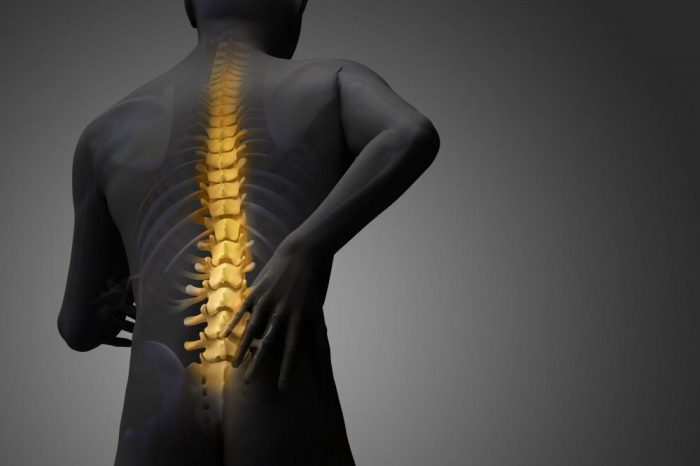HIGH INTENSITY ZONE SYMPTOMS AND TREATMENT

High Intensity Zone Syndromes and Treatment
MRI imaging of the low back often reveals areas of high intensity on the spine. Many patients with back pain also show these zones on MRI. The association between these areas and back pain has been debated. The most widely studied area of the lumbar spine is the posterior annulus. It is believed that the presence of these zones may represent disc degeneration or annular fissures. Nonetheless, there are many possible phenotypes that can represent the source of low back pain.

In 1992, Aprill and Bogduk first described the high intensity zone (HIZ). This MRI finding represents a tear or fissure in the posterior annulus of the intervertebral disc. The region represents vascularized granulation tissue that is growing into a tear. Furthermore, it is believed that posterior annular fibers are more susceptible to disruption than anterior annular fibres, thus making the region more susceptible to pain.
The high intensity zone is a phenotype of discogenic low back pain (LBP) and is an important factor for diagnosis. Studies have shown that HIZs are a highly specific marker of discogenic LBP and correlate with patient pain after provocation discography. As noninvasive MRIs became more common, the clinical implications of the HIZs have emerged.
High intensity zone was first described by Bogduk and Aprill in 1992. In fact, it represents a deep tear in the annulus fibrosus that is the cause of chronic low back pain. The findings of the initial studies on HIZs suggested that the HIZ was a highly specific marker of painful lumbar disc. However, further studies are needed to confirm these findings.
In 1992, Bogduk and Aprill first defined the high intensity zone (HIZ) as a white high signal on T2W MRI. It was found to be a symptom of discogenic LBP. In addition, the HIZ is a diagnostic marker for lumbar annular tears. It can be used in determining discogenic LBP.
The diagnosis of a high intensity zone is crucial in assessing the causes of lumbar disc pain. The HIZ is the highest area of the annulus. The pain in the HIZ is a result of a radial tear in the disc. The radial tear has a definite origin in the lumbar disc. Consequently, the MRI findings indicate discogenic LBP.
The MRI findings of the HIZ on the lumbar region are the most important diagnostic markers for this disc. The presence of this white signal in the posterior portion of a disc is indicative of a grade 4 annular tear. The pain in the HIZ can be a symptom of a radicular spondylosis, a herniated disc, or a fracture.
The diagnosis of a high intensity zone is important for patients with discogenic low back pain. The condition is often related to a poor quality of life and can occur during pregnancy or in adulthood. During the first few months of recovery, it may be accompanied by chronic pain or a discectomy. In these cases, the patient may experience a mild or moderate pain but should seek treatment for an underlying disease.
The presence of the HIZ on MRI may be a useful tool in treating a variety of spinal aches and pains. The diagnosis and treatment of a high-intensity zone will depend on the type of MRI findings. The HIZ is a bright white signal that is indicative of a tear or fissure in the annulus of a disc. In contrast, the MRI findings of the posterior region may be a sign of an annular tear, which may be indicative of a vascular lining.
In some cases, a high-intensity zone may develop without symptoms. However, the presence of a high-intensity zone on MRI is an indicator of back pain or a higher risk for the condition. One study of 72 patients with a high-intensity zone compared to another study of 79 patients without back pain found 20 percent of patients with the same zone in both groups. Therefore, a patient with no back pain does not necessarily have a high-intensity zone because he or she may not be experiencing the symptoms of it.






